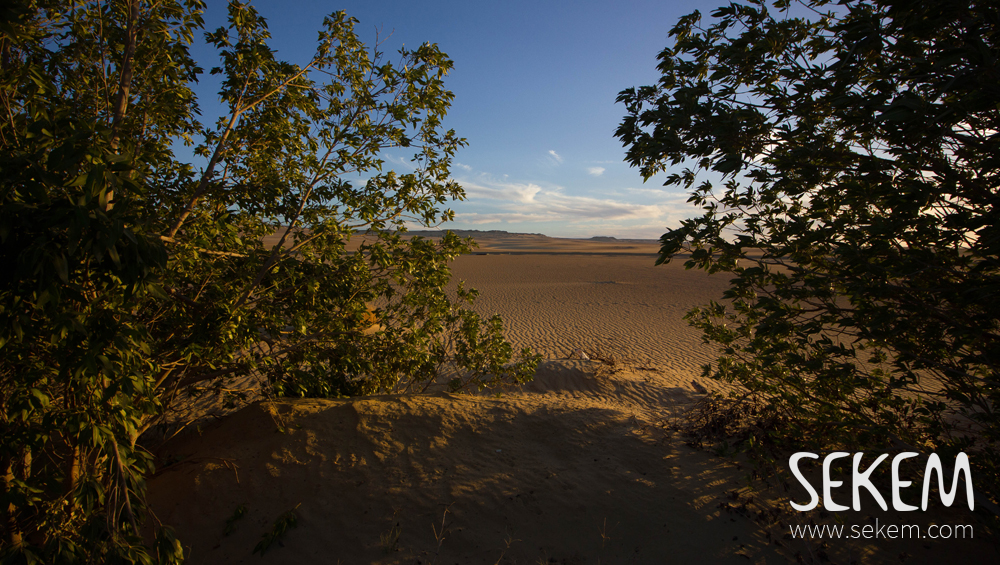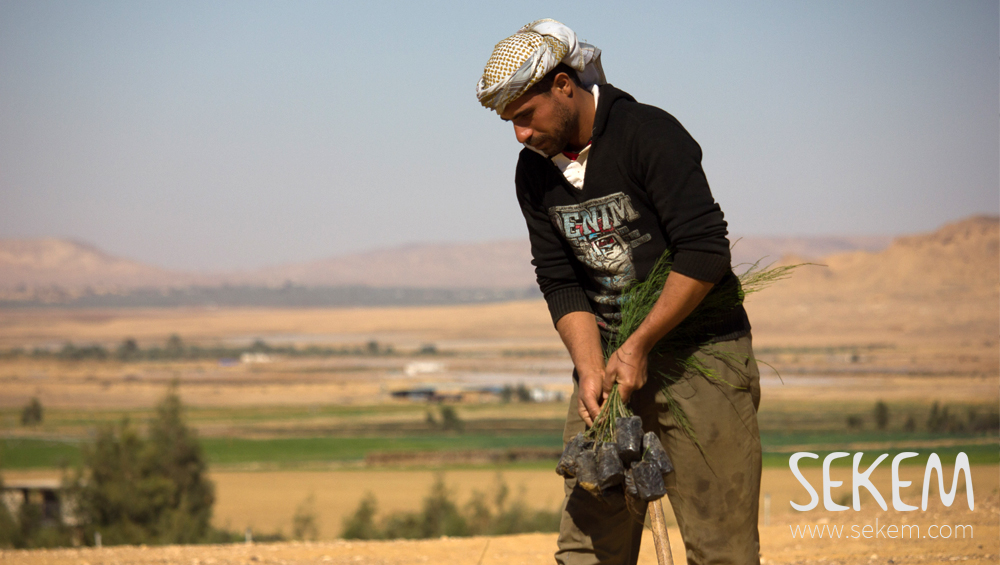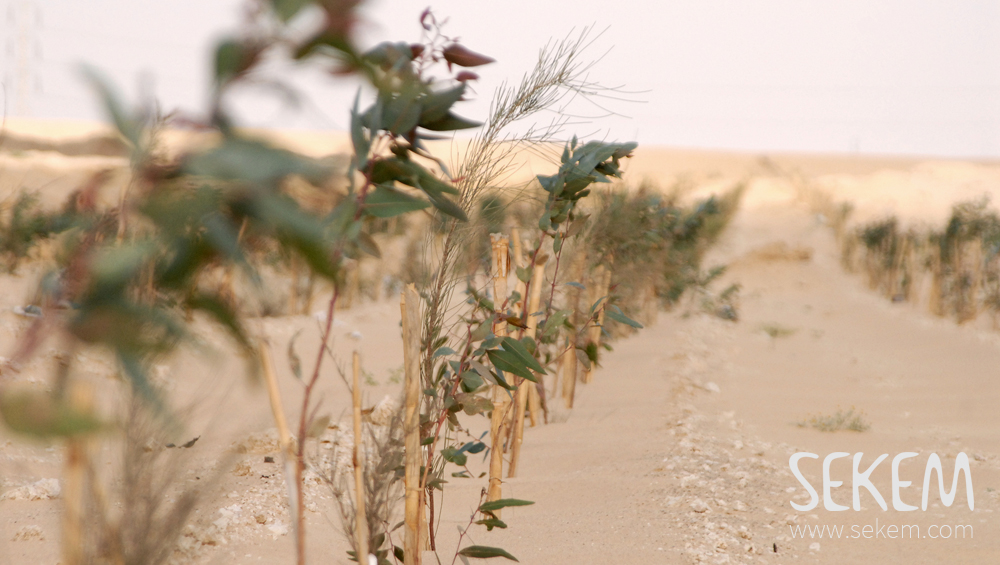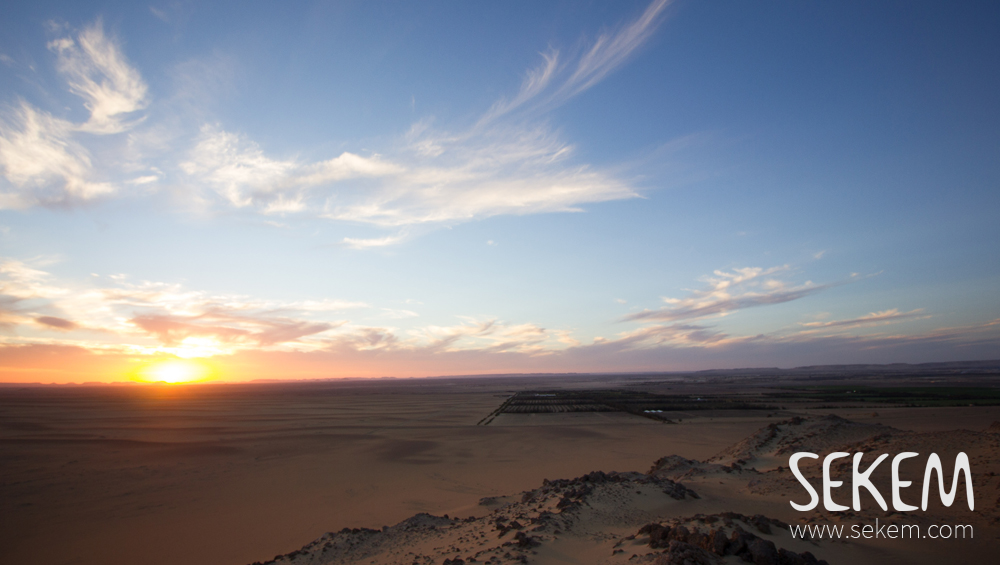By 2025, world population is expected to reach 7.9 billion of people, but due to the climate change, United Nations projects 2.7 billion of them will face severe water shortages. The sea levels will rise by 2 feet and many serious infectious diseases like Malaria and Cholera will be transmitted on wider range. Egyptians are expected to have a huge share of this upcoming problem and its consequences, although the country is already living in water scarcity. Due to its low Nile-Delta region, Egypt will suffer the second most, after Bangladesh, from sea level rising.
From burning fossil fuels in electricity production, transportation, industrial operations and false waste handling, greenhouse gases, like carbon dioxide and methane, are emitted and trap heat in the atmosphere causing the so-called Global Warming Effect. Because many of the major greenhouse gases stay in the atmosphere for tens to hundreds of years after being released, their warming effects on the climate persist over a long time and can therefore affect both present and future generations.
Awareness on the Carbon Footprint
Over the past years, the interest in global warming and climate change has grown exponentially. People start to realize that it is time to act in order to meet those challenges and to help mitigate climate change. Therefore, Heliopolis University for Sustainable Development (HU) took initiative by setting up a Carbon Footprint Center (CFC) to identify sources of greenhouse gas emissions and to calculate the amount of such gases emitted due to the operation of the assessed corporate over one determined year. Carbon footprint serves to identify the environmental performance of a specific corporate enterprise as to greenhouse gas emissions, thus assessing its impact on climate change.

In this context, Thoraya Seada, Project Manager of the Carbon Footprint Center at Heliopolis University, highlights: “The whole world is heading now to address the consequences of the global warming, but SEKEM has been working on it since its beginnings by implementing its holistic approach to environment, society and economy.”
Carbon Credit – sustainable investment
SEKEM has been active in climate protection activities since decades but without running a specialized institution for it. In 2014, Heliopolis University and the Academy of Scientific Research and Technology (ASRT) set up the Carbon Footprint Center (CFC) by becoming active in carbon assessment and CO2 emission reduction projects. Recently in 2016, CFC supported the “Future of Agriculture in Egypt” study that compares the cost of Organic and conventional food production by applying the Full Cost Accounting methodology and concludes that Organic farming is actually cheaper.
“We are now following up with alternative ways of investments, which add benefits on the economic and ecological levels, through the so-called Carbon Credit”, Thoraya Seada reveals. “One Carbon Credit generally represents the right to emit one metric ton of carbon dioxide or the equivalent mass of another greenhouse gas.” Carbon Credits are a highly regulated medium of exchange used to offset greenhouse gas emissions either through aerobic microbial composting or planting trees.

Since 2007, SEKEM has been committed, together with Soil & More, to sustainable projects offsetting greenhouse gases by recycling the agricultural waste and composting operations in Alexandria and on SEKEMs Al-Adleya Farm. Besides, CFC has proceeded in planting 60’000 trees since 2009 on SEKEMs Farm in the western desert oasis El-Bahariya, reaching the certified Gold Standard Carbon Credit status. “It is an indirect investment for the benefit of the whole planet, held through neutralizing the emitted carbon dioxide by either soil management and using calculated tons of compost or planting a certain number of trees’’, the SEKEM-manager explains.
Within this framework, a long-aged collaboration had been developed between the Egyptian Bio-Dynamic Association (EBDA) and CFC. Besides supporting the studies conducted by CFC with reports, EBDA held sessions presenting technical advices in regards to planting trees or using compost.

Projects on national and international level
In anticipation of this, CFC has been always involved in various partnerships on national and international level. For instance, on the SEKEM Farm in the oasis El-Bahariya, 35’000 trees shall be planted as a result of recent partnerships with the German company KNIPEX and the Swiss enterprise Amici. “In addition to the 30’000 trees, which have been already planted there by SEKEM since 2009, we are getting closer to the Gold Standard certified Carbon Credit”, Thoraya Saeda comments. “This certification is a strong evidence for SEKEMs mission and the commitment to sustainable communities.”
Also on national level, organizations signed an agreement with the CFC. All the direct and indirect emission sources of the companies are calculated then by the CFC within a Carbon Footprint Assessment. For example, the quantity of paper consumption, the number of cars used by the employees, business flights and many other energy emission sources. “According to the assessment, we offered one costumer, for example a recommendation to re-manage the lighting system as we found the highest emission in this section”, says Thoraya, who explains this step as the first level of a carbon footprint reduction strategy.
“Transferring the idea is our biggest challenge!’’
Besides, CFC has recently proposed to contribute to the Egyptian governmental project “1.5 Million Feddan”, which aims to reclaim 630’000 hectares (1.5 million feddan) desert land until 2017. “Although the aim of “1.5 Million Feddan” is to increase the food production, it is also a good chance to apply the procedures of carbon off-setting”, says the SEKEM-employee, underlining the fact that planting trees is not only one of the carbon sequestration methods, but also useful in protecting fertile land from winds. And this is then helping in combating desertification.

“Our biggest challenge is transferring the idea of saving the world from the upcoming climate change effects to as much people as possible. However, our main motive will always emerge from SEKEMs vision, which means that we are not only committed to environmental protection but in the same time to creating a sustainable society.” With these words, Thoraya Saeda also emphasizes on the principles of the Carbon Footprint Center that works under SEKEMs umbrella for holistic climate protection.
Noha Hussein
Study on the true costs of Organic and conventional agriculture
SEKEMs department for Sustainable Development
Egyptian Trees for “Active Climate Protection” in Europe
SEKEM Friends planting trees in the desert

